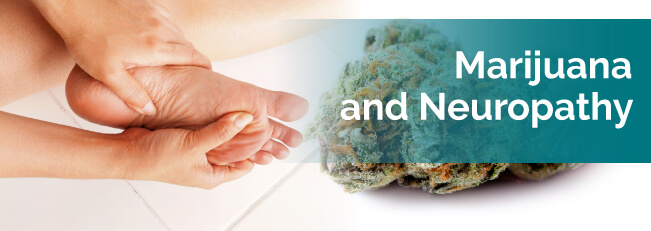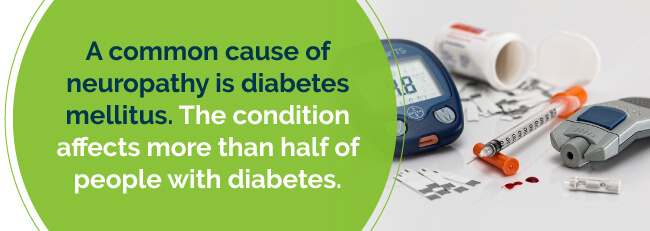
Neuropathy is a painful and debilitating condition that affects various parts of your body. While traditional therapies can help treat the underlying condition and manage the pain somewhat, many patients with neuropathy still experience pain and other symptoms. Using cannabis for neuropathy is an alternative treatment option to consider if you cope with the condition and can’t find relief from traditional therapies.
Treating neuropathy pain with medical weed is often an effective option for patients. If you don’t find enough relief from traditional treatment methods, consider incorporating marijuana into your routine. An experienced medical cannabis doctor can assess your medical history to recommend appropriate strains and amounts to manage your pain effectively.
While you may find pain relief from a number of marijuana strains, certain strains are well known for easing neuropathy pain. Those strains include:
Keep in mind that some strains are more potent than others. While this is beneficial in knocking out your pain, it may also be a little more than you expect if you aren’t used to using medical marijuana. Purple Kush and Chem Dawg, for instance, are quite powerful. Work with your marijuana doctor to decide on the strains that are ideal for you.
When discussing potential strains with your doctor, it’s important to understand the fundamental differences between the two main types of medical marijuana strains. Medical cannabis is described as being either Indica or sativa. These two kinds of medical weed offer the pain relief you want for your neuropathy. However, they also have some distinctions.
Indica strains have a sedating effect and help you relax. They are effective in treating pain, as well as anxiety, insomnia and muscle spasms. If you have trouble sleeping due to your neuropathy, consider an Indica strain for use at night.
Sativa strains tend to have the opposite effect. They boost your mood, creating an uplifting feeling with a more cerebral-based effect. In addition to pain, sativa strains may also help treat depression, ADD, fatigue and mood disorders. If you feel low on energy or need to stay alert during the day, sativa may be a better option.
You can, however, use both types of medical marijuana depending on your situation or needs. Choose a sativa strain for daytime use and an Indica strain for nighttime use, for example.
The method of ingestion is another consideration when using medical marijuana to treat neuropathy. The various methods offer different pros and cons. Comparing the differences helps you determine which method is best for your situation. You don’t have to choose a single method. Many medical marijuana users use multiple ingestion forms depending on the time of day and their unique needs.
The primary methods of using medical cannabis include:
For someone suffering from severe pain, that immediate relief is so important. However, smoking does come with drawbacks, including its effect on the lungs. The high temperature required for combustion also creates byproducts that may be harmful.
Find A Doctor Find A Dispensary
If you’re currently taking pain relievers to manage your neuropathy pain, you likely know the potentially severe side effects of them, including liver damage and addiction. Many patients want the pain relief without the side effects, which is why they explore the possibility of using medical marijuana.

While medical cannabis is a natural alternative, it’s important to understand it does come with some side effects. Most people consider those effects to be mild and minor compared to the possible side effects of prescription medications.
Some of the possible side effects you may feel with medical marijuana include:
Most of the symptoms are easy to manage. Some can even be a positive. If you toss and turn at night, the sleepy effect caused by medical weed can help you fall asleep, for example. If your appetite has been low, increasing your hunger can help you get the nutrients you need.
If you or a loved one suffers from neuropathy, medical marijuana may be an effective treatment option for managing your symptoms. At MarijuanaDoctors.com, we can help you connect with experienced medical cannabis physicians in states where medical marijuana is legal. Search for a doctor now to improve your quality of life through pain relief.
Find A Doctor Find A Dispensary
Neuropathy refers to nerve damage that results in pain, weakness and numbness. Neuropathy isn’t a disease on its own, rather, it’s an effect of an underlying condition that causes the nerve damage. The condition affects the peripheral nerves, which is why it’s also known as peripheral neuropathy.
The peripheral nerves are located outside of your central nervous system. In other words, the damage pertains to nerves outside of the brain and spinal cord. Peripheral nerves carry information from the central nervous system throughout the body.
Nerve damage can happen in different types of nerves, including:

A common cause of neuropathy is diabetes mellitus. The condition affects more than half of people with diabetes. Other potential causes of neuropathy include:
Different types of neuropathy exist and depend on how many nerves the underlying condition has damaged. The types neuropathy include:

Neuropathy affects approximately 20 million Americans, yet the extent of it varies significantly depending on the cause, type and each patient’s unique case.
Specific symptoms of neuropathy vary drastically from one patient to the next, primarily due to the location of the damage and the type of nerves that are affected.
Possible symptoms of neuropathy include:
Additional symptoms may occur when the autonomic nerves are affected. Those symptoms include:
Some complications can arise from neuropathy and include:
Diagnosing neuropathy often requires different tests to find the core cause. The diagnosis starts with a medical history and exam. This process helps the physician determine possible underlying conditions that could have led to neuropathy. Other possible tests include:
Determining if you have neuropathy, as well as the underlying cause of it, is the first step toward beginning a treatment plan to manage your symptoms, whether through traditional therapies or alternative ones, like medical marijuana.
Traditional treatments manage the actual cause of neuropathy. If an autoimmune disorder is to blame for the nerve damage, for example, the treatment might focus on managing that disease. Or, if you experience neuropathy due to a vitamin deficiency, your primary care provider will work on resolving that.
When resulting from a treatable condition, like a vitamin deficiency, the symptoms of neuropathy often decrease with proper treatment, such as by raising your vitamin levels through supplements.
Another important part of the treatment process is to manage the pain that often accompanies neuropathy. Pain relief is particularly helpful in cases where it’s difficult to treat the primary cause of neuropathy. Pain relief is available through a variety of treatments, including:
Pain-relieving drugs are used to treat neuropathy pain in many cases as well. Over-the-counter drugs may work for mild cases of neuropathy. Those with more severe pain may need a prescription painkiller. Opioids may be prescribed. However, those medications come with some potentially dangerous side effects, including addiction.
In some cases, surgery helps correct conditions that cause neuropathy. Surgery, for instance, relieves pressure on the nerves when a tumor is pressing on them. By removing the pressure, doctors can help ease your neuropathy symptoms.
One of the major benefits of weed is its pain-relieving effect. Research studies and anecdotal evidence show decreased feelings of pain in patients that use medical marijuana.

Medical cannabis appears to relieve various types of pain, including headaches, chronic pain and neuropathic pain. Taking marijuana may not cure the underlying condition causing your neuropathy, but it may help you manage the pain sensations.
Chemicals called cannabinoids, which are present in medical marijuana, interact with the body to provide pain relief. Tetrahydrocannabinol (THC) and cannabidiol (CBD) seem to have the greatest effect on pain. These two chemicals activate receptors in your body’s natural endocannabinoid system.
The endocannabinoid system is responsible for many functions in your body, including the immune system response that causes inflammation. Medical marijuana strains containing THC and CBD help the body lower pain levels by binding to the receptors of your endocannabinoid system to prevent inflammation which can make it easier to handle your neuropathy.
Another benefit of medical weed is its relaxing effect. Maintaining a relaxed feeling can help reduce the amount of pain you feel. You may also find it easier to sleep by using certain strains of cannabis that have a sleep-inducing effect. When combined with pain relief, the drowsiness may help you get a better night’s sleep.
Research on medical marijuana and neuropathy is limited because of federal regulations, but several studies show a positive correlation between cannabis use and pain relief for neuropathy.
The Neuropathy Journal highlights several studies about medical marijuana treatment for neuropathy, including:
Medical cannabis may give you the pain relief you need to improve your quality of life. By minimizing or eliminating the pain, you’re able to go about your daily activities without debilitating pain. Reducing that pain makes you feel better overall so that you can enjoy life.